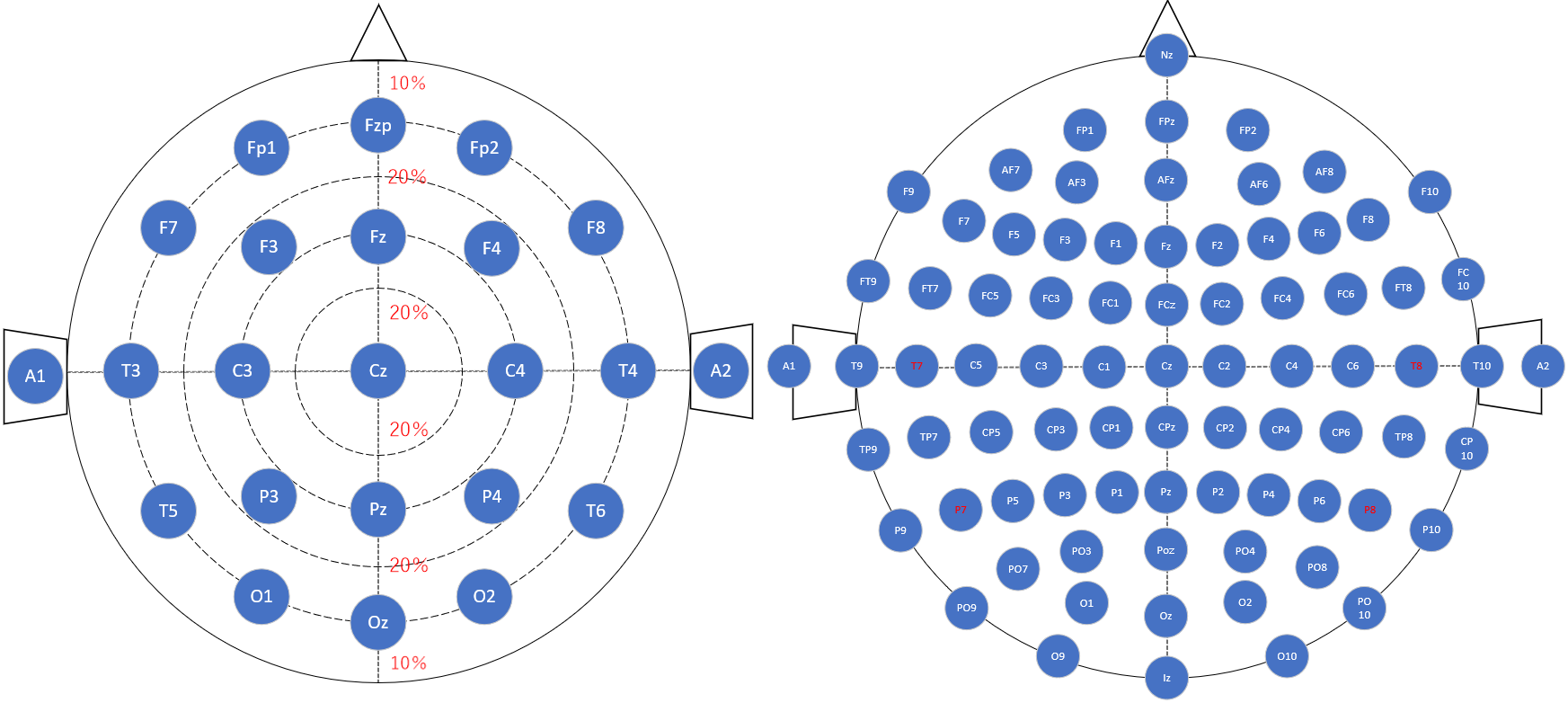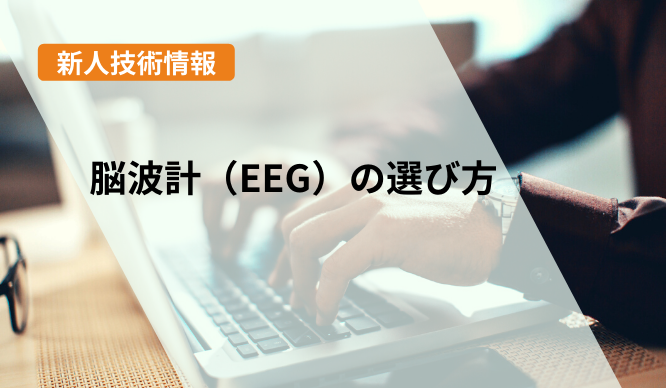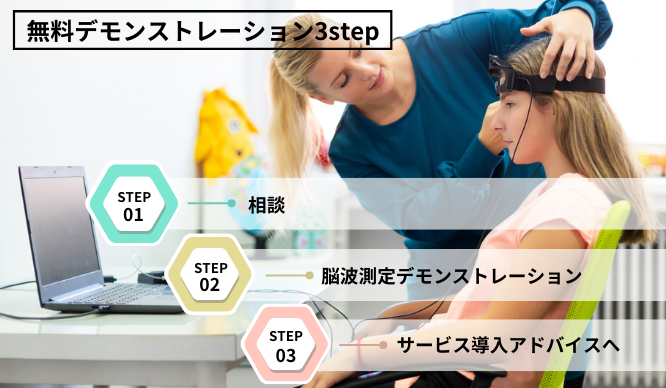新人技術者の脳波測定記 電極の配置方法

はじめに
脳波とは?EEG(イーイージー)とは?何がわかるの?
そんな状況からスタートした新人技術者が実際にEEGをさわってみて感じたことを掲載する”新人技術者の脳波測定記”。
予備知識なしで挑む生の声をお伝えしようと思います。
電極の配置方法
EEGの測定原理は、シナプス郡から放出される微弱な電気信号を頭皮上に設置した電極を用いて測定する仕組みです。つまり、頭皮上に設置する電極の装着方法と特性が重要となります。
今回は、電極の配置方法に関して解説致します。
電極の配置方法
国際脳波・臨床神経生理学会連合(現・国際臨床神経生理学会連合)が国際標準として推奨する(国際)10-20法もしくは、多チャンネル記録に対応するために1991年に拡張したのが10%法(拡張10-20法)のいずれかの位置にセンサを配置することが一般的です。10-20法のメリットに関しましては、下記のとおりといます。
メリット
・ルールに基づいて配置する為、位置の再現性が高く、繰り返し測定しやすい
・大脳をカバーしている
・各電極間の距離を等しくなるように設計されている
・解剖学的部位に基づいて配置されている
10%法(拡張10-20法)は10-20法をベースとしていますが、下記2点が異なります。
・10-20法では命名ルールに一貫性がなかった4部位の名称を一貫性を持たせた名称に変更 (T3→T7, T4→T8, T5→P7, T6→P8)
・AF, FC, CP, PO(いずれも正中線上)を追加定義

図1.10-20法(左図) vs 10%(拡張10-20)法(右図)
|
部位名称 |
電極名 |
|||
|
前頭極 |
Frontal pole |
Fp1 |
Fzp |
Fp2 |
|
前頭 |
Frontal |
F3 |
Fz |
F4 |
|
下前頭 |
Inferior Frontal |
F7 |
|
F8 |
|
中心 |
Central |
C3 |
Cz |
C4 |
|
頭頂 |
Parietal |
P3 |
Pz |
P4 |
|
後頭 |
Occipital |
O1 |
Oz |
O2 |
|
中側頭 |
Mid Temporal |
T3(T7) |
|
T4(T8) |
|
後側頭 |
Posterior Temporal |
T5(P7) |
|
T6(P8) |
|
耳朶 |
Auricular |
A1 |
|
A2 |
まとめ
実際、市販されているEEGのほとんどの製品は、10-20法もしくは10%法に準拠しています。
一方、耳の周囲もしくは耳の中にセンサーを配置した製品もあります。
こちらは、周波数成分の検出に特化した製品になりますので、用途に応じて選択頂くのがよいかと思われます。
無料デモンストレーションのご案内
実際に脳波を計測してみませんか?
脳波をベースにした「熟練者の技能伝承」とは?
脳波ベースにした人間の意識、判断を学習するAIとは?
不明なことが多いかと思いますので、まずは脳波を測定してどんなものか体験してみませんか?
ご興味ある方は下記ボタンより詳細をご確認ください。
お問い合わせ
本記事に関してご質問がありましたら、以下より問い合わせください。
InnerEye メーカー情報Topへ
InnerEyeメーカー情報Topページへ戻りたい方は、以下をクリックください。
免責および情報の利用
本ページは予告なく変更することがあります。
脳科学は日々新しい研究成果が発表されている分野です。
情報の正確性について万全を期しておりますが、掲載されている内容が最新の研究成果にそぐわない場合もあります。
様々な論文をご参照の上総合的にご判断ください。
また、本ページに掲載されている内容をもとに作成されたプログラムに対して責任を負いかねますので予めご了承ください。



